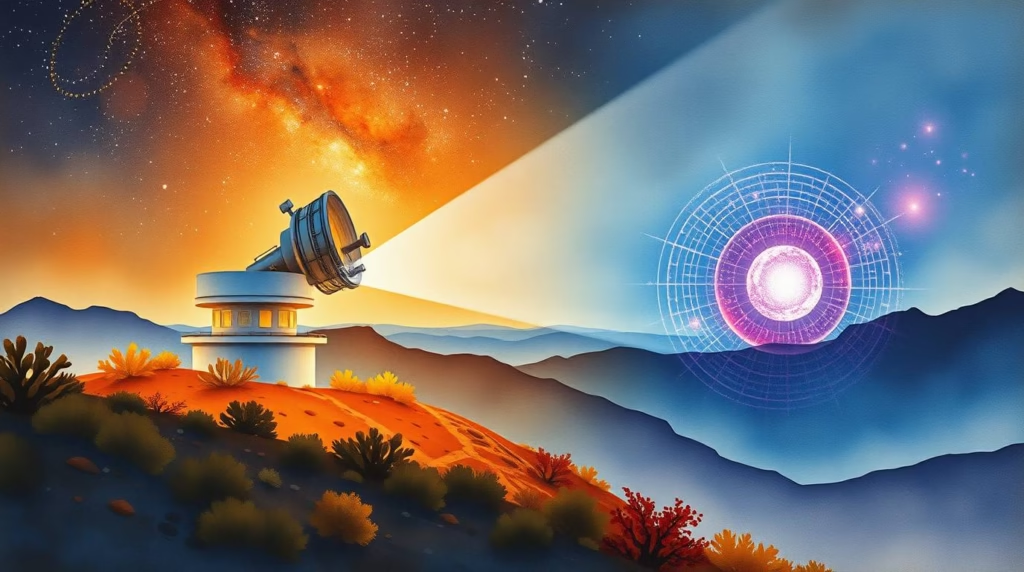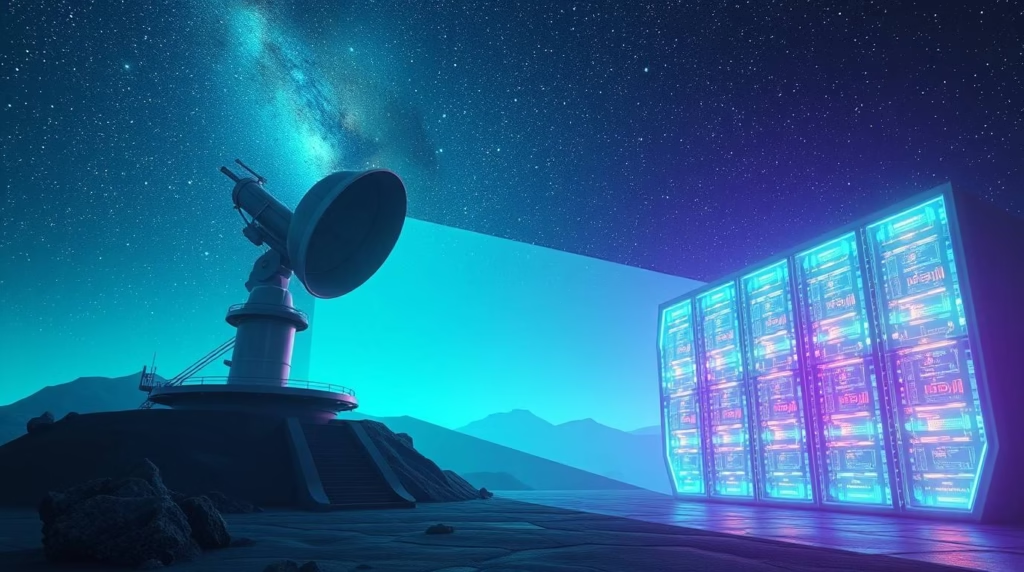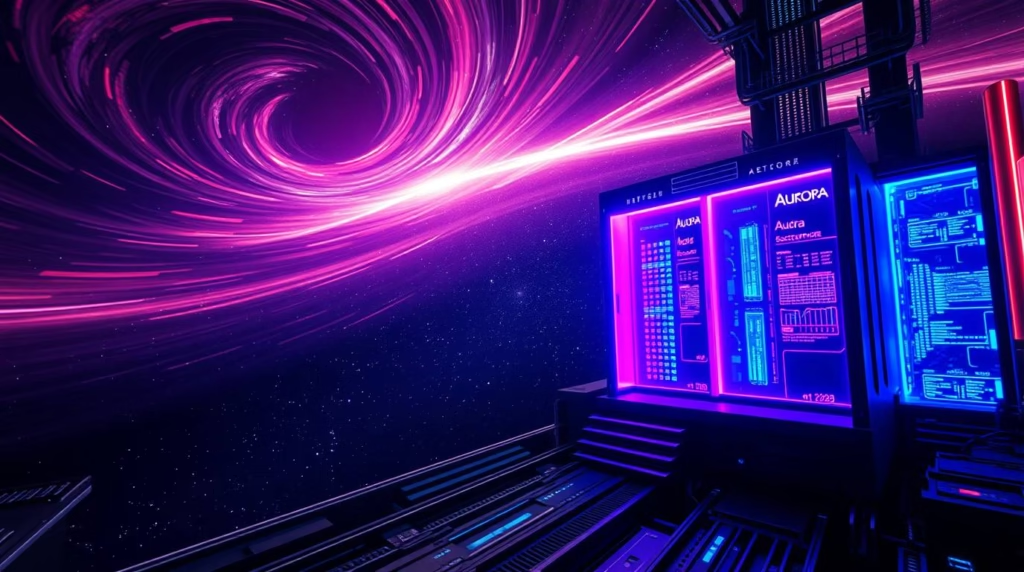Unraveling Cosmic Mysteries: Dark Energy, DESI, and the Power of Aurora Simulations
The universe is a vast, enigmatic expanse, and recent discoveries are pushing the boundaries of our understanding, hinting at physics beyond the standard model of cosmology. The Dark Energy Spectroscopic Instrument (DESI), an ambitious international collaboration, has unveiled findings that challenge long-held assumptions about dark energy—the mysterious force driving the universe’s accelerated expansion. Coupled with cutting-edge simulations powered by the Aurora exascale supercomputer at Argonne National Laboratory, researchers are diving deeper into these cosmic puzzles, potentially rewriting the rules of the cosmos. This article explores DESI’s groundbreaking observations, the role of advanced simulations, and their implications for cosmology, offering a comprehensive look at how science is probing the universe’s deepest secrets.
DESI: A Window into the Universe’s Evolution
Located at the Kitt Peak National Observatory in Arizona, DESI is a revolutionary tool designed to map the cosmos with unprecedented precision. Operated by the U.S. DESI, the Lawrence Berkeley National Laboratory of the Department of Energy, is a global collaboration of more than 900 scientists. Unlike traditional telescopes that capture images, DESI conducts spectroscopic surveys, collecting light spectra from distant galaxies to measure their composition, distance, and motion. This approach has enabled researchers to construct the most detailed three-dimensional map of the universe to date, tracing its expansion over the past 11 billion years.
In its first year of operation, DESI produced data that largely aligns with the standard model of cosmology, which describes the universe’s composition and evolution. However, subtle anomalies in the data suggest that dark energy, the force believed to account for approximately 68% of the universe’s energy, may not behave as previously thought. Traditionally, dark energy has been modeled as a cosmological constant—a fixed, unchanging value introduced by Albert Einstein in 1917 to stabilize his equations of general relativity. Einstein’s cosmological constant was initially proposed to support a static universe, but subsequent discoveries of cosmic expansion rendered it obsolete until the 1990s, when observations revealed the universe’s expansion was accelerating.
DESI’s initial findings, presented at the American Physical Society’s Global Physics Summit, indicate that dark energy might be dynamic, evolving over time rather than remaining constant. If confirmed, this discovery could upend the standard model, suggesting that dark energy behaves like a fluid with negative gravity—a phenomenon never observed in terrestrial experiments. Andrew Hearin, a physicist at Argonne National Laboratory, a DESI member institution, emphasized the significance: “If the DESI result holds, it means the cosmological constant isn’t the source of cosmic acceleration. This would point to a dynamically evolving force, opening new avenues for understanding the universe.”
The Role of Dark Energy in Cosmic Expansion
One of the biggest mysteries in contemporary physics is still dark energy. First hypothesized to explain the unexpected acceleration of the universe’s expansion in the late 1990s, dark energy is thought to counteract gravity, driving galaxies apart at an ever-increasing rate. The cosmological constant, revived as the simplest explanation for this phenomenon, assumes dark energy’s density remains fixed across time and space. However, DESI’s data suggests otherwise, hinting at a more complex, time-varying form of dark energy.
This potential shift challenges the foundational assumptions of cosmology. The standard model, often referred to as Lambda-CDM (Lambda Cold Dark Matter), relies on the cosmological constant (Lambda) to explain cosmic acceleration. If dark energy is dynamic, it could require new theoretical frameworks, potentially introducing exotic physics or modifying our understanding of gravity itself. Katrin Heitmann, a cosmologist and deputy director of Argonne’s High Energy Physics division, expressed excitement about the findings: “When DESI’s results emerged, our team was thrilled. We immediately began exploring how simulations could help validate these observations and distinguish between new physics and potential observational errors.”

Aurora: Simulating the Cosmos at Unprecedented Scale
To investigate DESI’s findings, researchers turned to the Aurora exascale supercomputer at the Argonne Leadership Computing Facility (ALCF), a DOE Office of Science user facility. Aurora’s immense computational power—capable of performing over a quintillion calculations per second—makes it an ideal tool for simulating the universe’s evolution. The research team, including Hearin, Heitmann, and postdoctoral fellow Gillian Beltz-Mohrmann, used Aurora to run high-resolution simulations that model the universe under different dark energy scenarios.
These simulations serve as a virtual laboratory, allowing scientists to test theories in a controlled environment. By creating two model universes—one with a constant dark energy and another with a time-varying dark energy—the team could compare the outcomes against DESI’s observational data. Both simulations began with identical initial conditions, enabling researchers to isolate subtle differences caused by the dark energy models. “Simulations are crucial for separating true cosmic signals from systematic errors in data collection or analysis,” Heitmann explained. “Aurora allows us to simulate the universe’s growth with enough detail to detect fine differences that might otherwise be lost.”
The simulations’ high resolution was critical. As Heitmann noted, “Without Aurora’s power, small but significant details could be blurred, like trying to read fine print without glasses.” By leveraging Aurora’s capabilities, the team completed these complex simulations in just two days—a task that would have taken weeks on older supercomputers. This speed enabled rapid responses to DESI’s findings, accelerating the research process.
The Power of On-the-Fly Analysis
A key innovation in the team’s approach was the use of on-the-fly analysis, a method that processes simulation data in real time as it’s generated. Traditional simulations require storing vast datasets for later analysis, which can create bottlenecks. On-the-fly analysis, however, leverages Aurora’s processing power to extract insights immediately, streamlining the research process. “This approach eliminates delays and lets us refine our simulations on the go,” said Beltz-Mohrmann. “It’s like getting instant feedback from the universe.”
By comparing the simulated universes to DESI’s data, researchers can test whether observed patterns reflect new physics or result from systematic effects, such as limitations in telescope calibration or data processing. If the simulations reveal that a specific measurement can distinguish between constant and dynamic dark energy, scientists can apply that measurement to DESI’s real-world data, refining their understanding of the universe’s behavior.
Implications for Cosmology and Future Research
While DESI’s findings are not yet conclusive, they represent a pivotal moment in cosmology. Confirming a dynamic dark energy would require rethinking the standard model, potentially leading to new theories about the universe’s fundamental forces. Even if the results stem from observational errors, the simulations provide a valuable framework for improving data analysis techniques, ensuring more accurate interpretations of future observations.
The Argonne team has made their simulation data publicly available, inviting the broader scientific community to explore DESI’s findings. “These simulations are a game-changer,” Hearin said. “They give researchers a test bed to experiment with new analysis methods and determine which dark energy model best matches reality.” By fostering collaboration, the team hopes to accelerate progress toward resolving the dark energy mystery.
Aurora’s role extends beyond this study. Its ability to handle massive, high-resolution simulations positions it as a cornerstone for future cosmological research. As DESI continues to collect data over its planned five-year mission, Aurora will enable scientists to keep pace with new discoveries, testing hypotheses and refining models in near real time.
Why This Matters: Redefining Our Cosmic Perspective
The DESI findings and Aurora simulations underscore the dynamic nature of scientific discovery. By challenging the cosmological constant, DESI raises profound questions about the universe’s past, present, and future. Is dark energy a fixed force, or does it evolve with the cosmos? Could it reveal new physics that transforms our understanding of reality? These questions drive researchers to push the limits of technology and theory, blending observational data with computational power to unlock the universe’s secrets.
For now, the DESI collaboration continues to scrutinize its data, and the Argonne team’s simulations provide a critical tool for interpreting these findings. As Beltz-Mohrmann noted, “Simulations bridge the gap between theory and observation, helping us design better experiments and measurements.” Whether DESI’s results confirm a dynamic dark energy or refine our existing models, they highlight the power of collaborative science and advanced technology in exploring the cosmos.

Final Thoughts: A New Era of Space Travel
The interaction between Aurora’s simulations and DESI’s observations ushers in a new era of cosmology. By leveraging cutting-edge technology, researchers are probing the nature of dark energy and testing the limits of the standard model. These efforts not only deepen our understanding of the universe but also demonstrate the potential of exascale computing to tackle science’s biggest challenges. As DESI continues to map the cosmos and Aurora powers new simulations, the scientific community stands on the brink of discoveries that could redefine our place in the universe.
for more news visit Bulletinbuzzs
